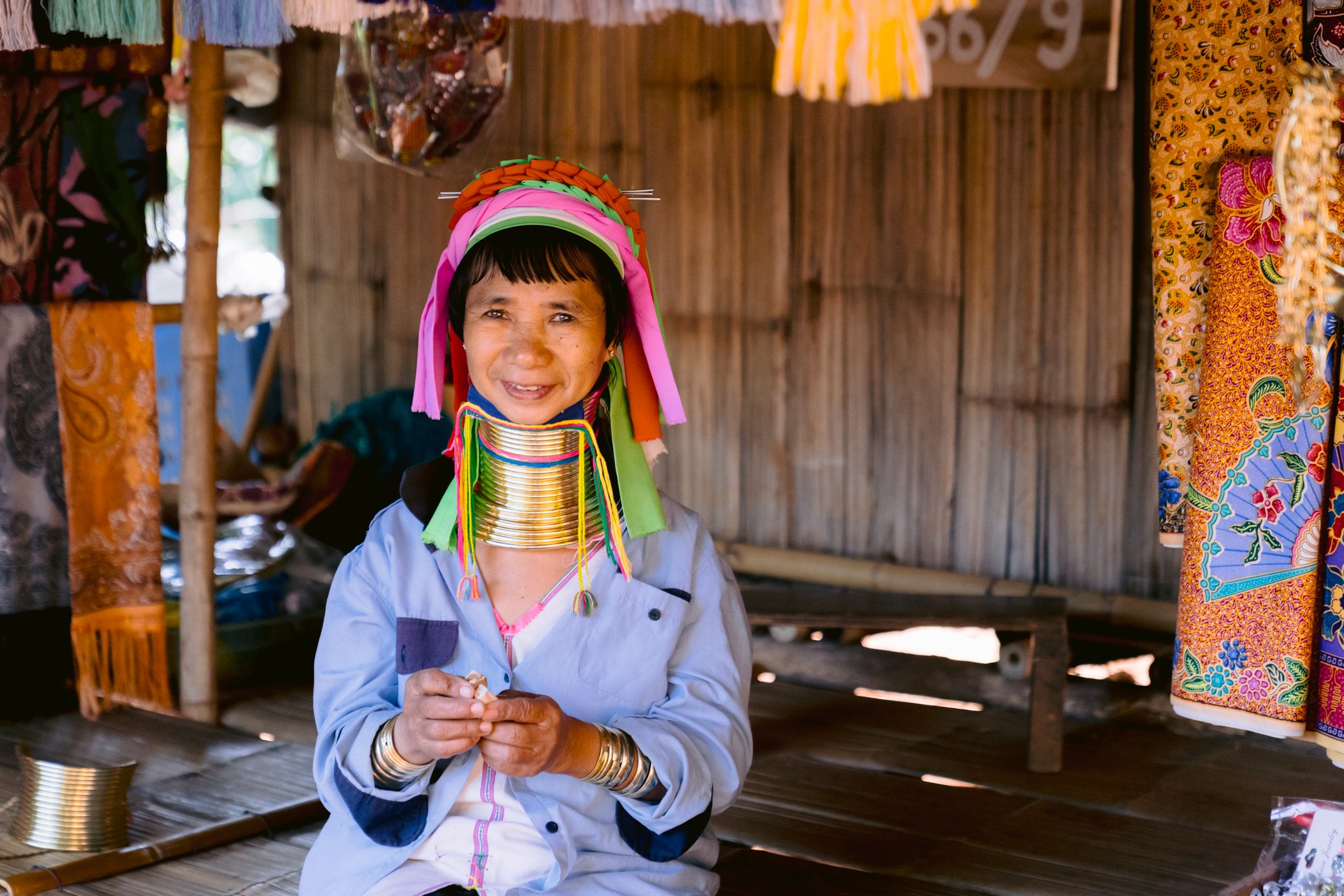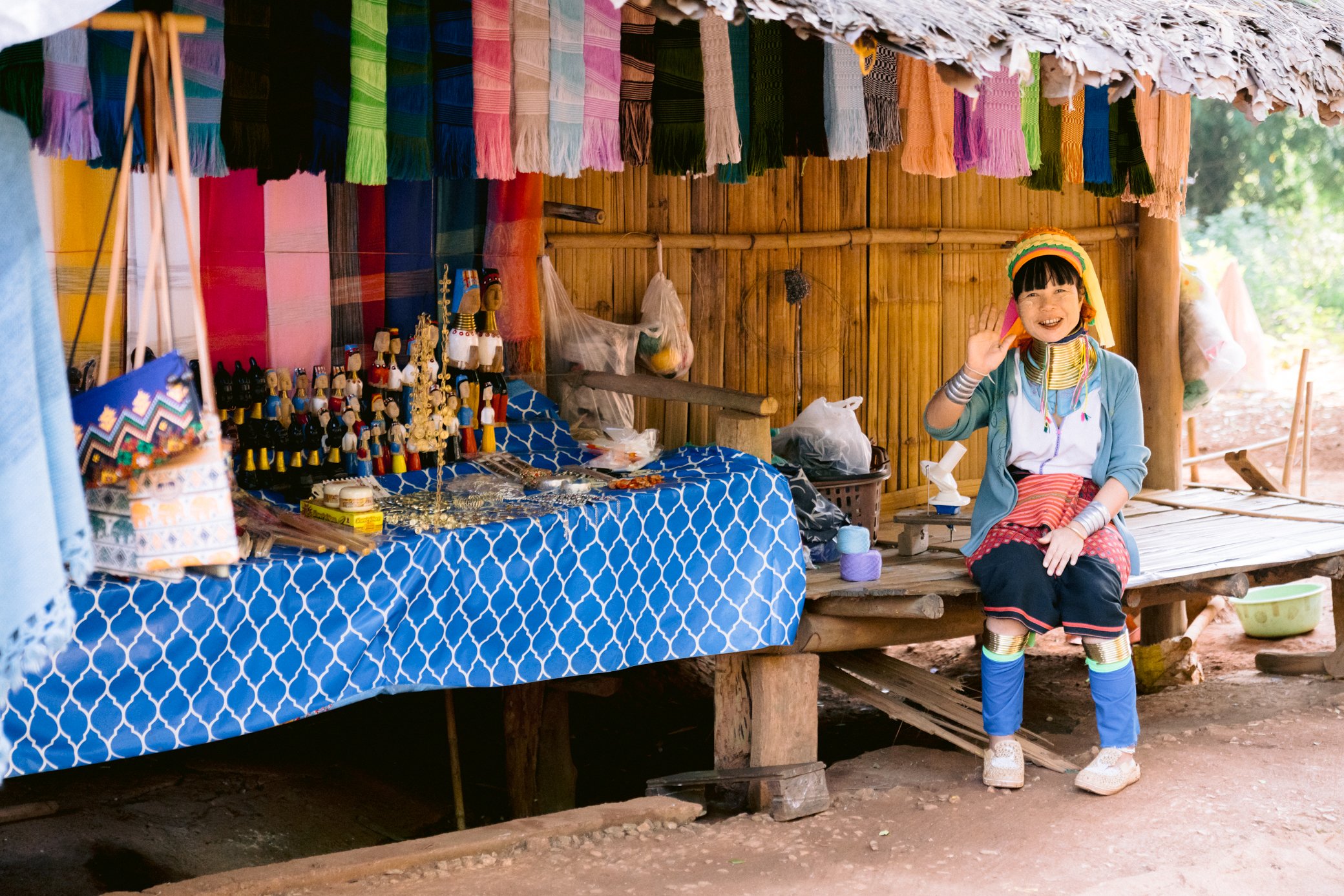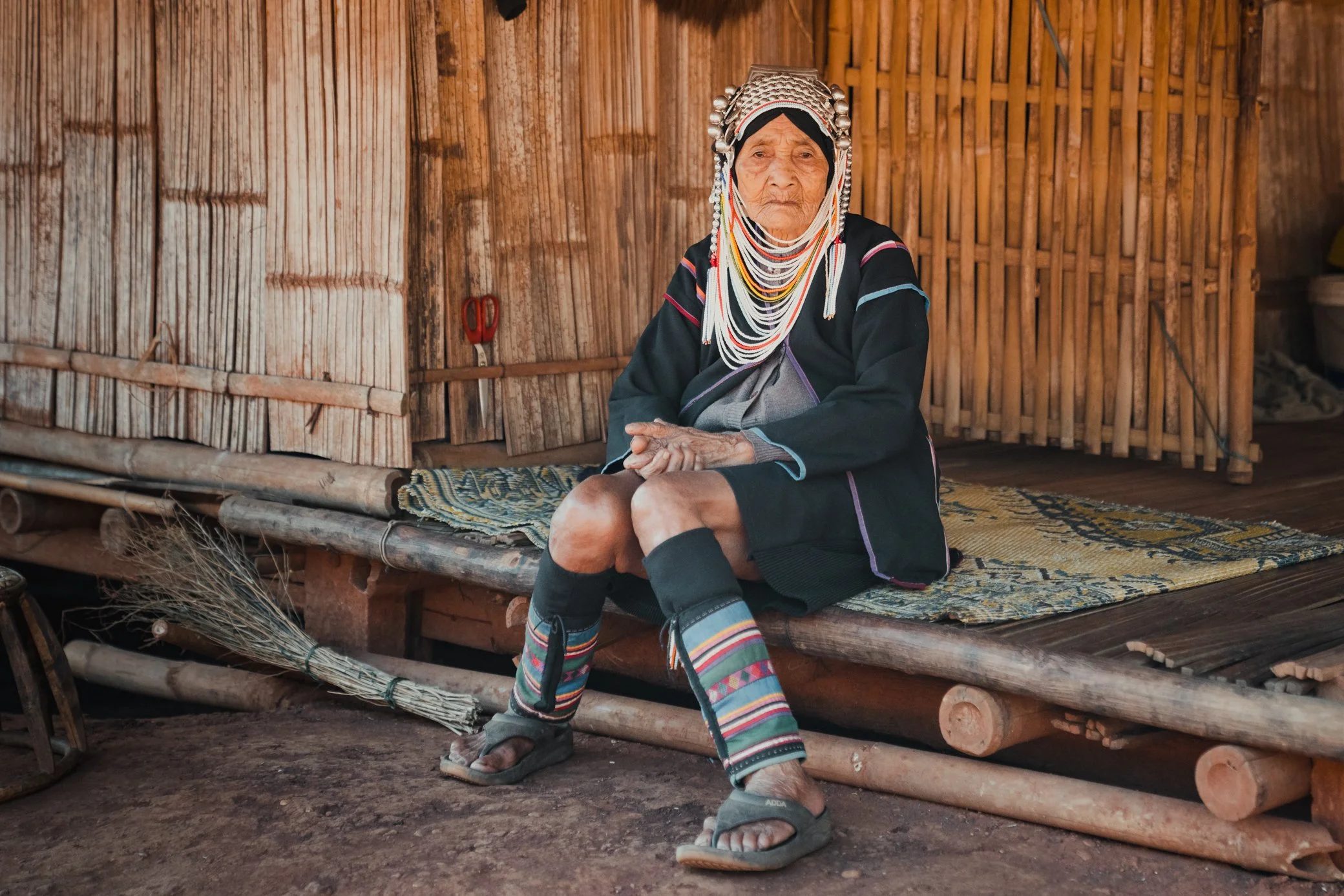Longneck Karen Village
I've been putting off writing about our experience in the tribal village outside of Chiang Rai because I am so torn about how I feel about the experience. During the late 80's and early 90's, many tribal communities fled Myanmar to Thailand to escape persecution and civil war.
The most popular and politicized group is the Longneck Karen Tribe, also known by Kayan Lahwi or Padaung, as they call themselves. The women in this tribe wear brass rings stacked around their necks, and it's considered a symbol of beauty in their culture. Their origins trace back to central China, and it is believed they immigrated to Myanmar in 1000 AD. As mentioned, many fled Myanmar to Thailand in the late 80s, though much of the tribe remains in Myanmar.
When the girls are as young as five, they start wearing the brass rings around their necks. As they age, the coil is replaced by a longer one, and more turns are added, making the neck look elongated and stretched, hence the name "long neck." The rings are heavy and cause bruising around the collarbone and neck, but this does not deter the women from wearing them. The neck itself does not stretch; instead, the collarbone and rib cage is weakened, collapsing down under the weight of the ten pound coils.
When the women become young adults, they are given the option to continue wearing the rings, or they can have them removed; most choose to keep them on. It is a bit tough to walk around and see younger girls with these rings around their necks, but this is their culture and heritage; I am there to learn and not to pass judgment.
As interest in seeing these tribeswomen increased, smaller tourist "villages" were created where you could quickly come and see these hill tribes (other tribes include Lahu, Kayaw, or Yao) in their traditional dress and buy souvenirs to support them. From the information I gathered, the Thai government typically retains the entrance fee, and they provide a stipend to those working in these villages. On top of the stipend, any money they make off selling souvenirs is for the tribes to keep themselves.
Member of the Akha Village (Called Gaw or Eegaw by the Thai people). 65,000 reside in Thailand.
In 2008, the United Nations caused a stir when they equated visiting these villages in northern Thailand to visiting "human zoos." Since then, many people have begun boycotting based on these remarks. It was stated that some of the villagers were trying to obtain exit visas from Thailand to move to New Zealand and a group of 20 Kayans were refused exit- the UN said it was because the Thai government was profiting too much off them in the tourism sector to let them leave.
Akha tribeswoman
Boycotters thought not going to these villages would force the Thai government to grant the tribespeople citizenship. Instead, it hurt the only way the tribespeople make a decent living. In a 2018 short film by documentary filmmaker Marko Randelovic, a member of the Kayan tribe, Mu Tae, invites people to come visit and experience their way of life. Though their children have yet to be granted citizenship, she says returning to Myanmar is far worse for them as they no longer have land or means to make a living. When tourists visit, they make a good living and it helps preserve their way of life.
Kayan woman weaving
As we paid and entered the Union of Hill Tribe Villages, the thoughts from above were cycling through my mind. There are ways now to join tours where you hike deep into the woods to get a more authentic hands-on experience with the tribes, and they say most of the money from those excursions goes directly into that tribe community. We were traveling with our two and one-year-olds for this trip, so we were not prepared to go deep off the grid into the jungle with them yet.
Member of the Kayaw tribe. Traditional Kayaws believe in tree spirits but the new generations are now Buddhist or Christian. They also have their own written language.
We found welcoming smiles from everyone in the village when we entered. I wore my daughter on my back in her carrier, and she cheerfully waved to all the villagers, prompting huge smiles that stretched across their faces and waves in return. I happily handed money for trinkets and gave many villagers cash, knowing the funds would directly support them.
Is boycotting the answer? I don't believe so. Articles have surfaced over the past few years with interviews of the tribespeople asking tourists to return (especially in the wake of COVID-19) because they enjoy their jobs in tourism and meeting people from around the world. They thrive when we invest in them.
If you decide to go, I hope you take the time to learn as much as possible about the tribespeople. Support the village members by purchasing small items and even giving them cash tips, especially if you are photographing them.
I hope to return one day to take that trek deep into the woods and learn even more about their way of life.
Hopefully Thailand grants these refugees citizenship to allow for a better future and access to education for their children.
For now, I will remember the genuine smiles we were greeted with and hope that our visit and contributions play a small role in improving their lives.















